 8
8

The mystery of the stone walls of Sacsayhuaman
 15. 04. 2024
15. 04. 2024



 13. 01. 2020
13. 01. 2020

We will introduce you to the 10 most important Irish Celtic symbols together with their meaning.
For centuries, Celtic symbols and insignia had incredible power in the eyes of the ancient Celts and their way of life. The word "Celtic" refers to people who lived in Britain and Western Europe between 500 BC and 400 AD
The Celts belonged to the Iron Age and lived in small villages led by war chiefs. Ireland has been home to various civilizations for thousands of years because of its rich history and culture. These ancient communities used Celtic symbols that have now become part of Irish identity and Irish heritage. Some of these Celtic symbols even became symbols of Ireland itself.
If you wish to get to know some of these Celtic symbols more deeply, be aware that I have written more articles about most of them that I will finish soon. Let's take a look at some of the most popular Celtic symbols and what they mean.
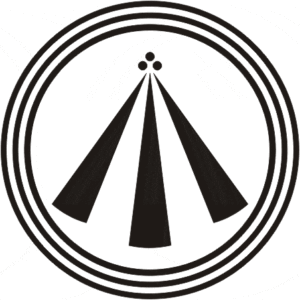
This neo-druid symbol, a popular model for tattoos, jewelery and artwork, is said to have been invented by the 18th-century Welsh poet Iolo Morgannwg. However, studies suggest that this symbol may be older than originally thought. The word "Awen" means inspiration or essence in the Celtic language and first appeared in the 9th century book "Historia Brittonum". It was said to represent a harmony of opposites in the universe. The two outer rays represent the masculine and feminine energy, while the ray in the middle represents the balance between them.
There are more meanings for the Celtic symbol Awen. One interpretation is that the main outer lines are a symbol of both men and women, while the inner lines represent balance.
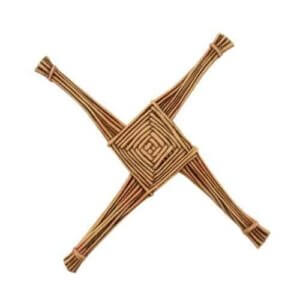
Brigita's cross, often considered a Christian symbol, is related to Brigita of Tuatha de Danaan, who is known in Irish Celtic mythology as the life-giving goddess. The cross is made of reeds or straw for the holiday of Imbolc, celebrating the beginning of spring.
With the arrival of Christianity in Ireland, the goddess Brigid became St. Brigita of Kildare and many divine qualities were transferred to her, including the symbol, the connection with the destructive power and the productive use of fire.
When you hang this traditional Irish Cross of St. Brigites on the wall will protect you. St. Brigita is one of the patrons of Ireland next to St. Patrick.
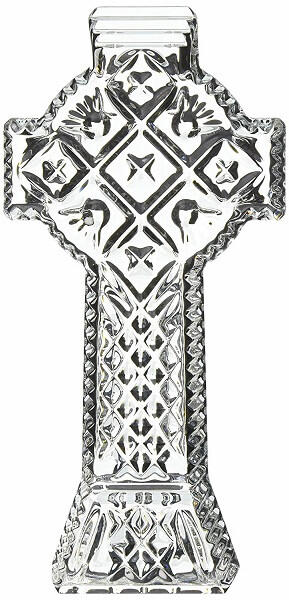
As with Brigit's Cross, many people associate the Celtic Cross with Christianity. Studies, however, suggest that this symbol precedes Christianity by thousands of years. In fact, this symbol has appeared in many ancient cultures. According to one theory, the Celtic cross represents four cardinal points. There is also another theory that says these are the four basic elements of earth, fire, air and water.
This powerful symbol reflects the hopes and ambitions of the Celts. While the cross is certainly a Christian symbol, its roots go back to ancient pagan beliefs.
It is remarkable how much the symbol of the Irish Cross is widespread in modern times.
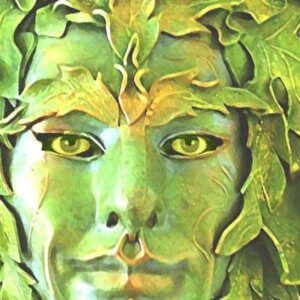
The green man is depicted in many cultures as the head of a man made of leaves. It is considered as a symbol of rebirth and interconnection between nature and man, and the green man's head can be seen in many buildings and structures in Ireland and Britain. Features lush vegetation and the arrival of spring and summer.
The Green Man tradition is carved into Christian churches throughout Europe. An example is the seven green men from Nicosia, Cyprus - a row of seven green men carved in the thirteenth century on the facade of St. Nicholas in Nicosia.
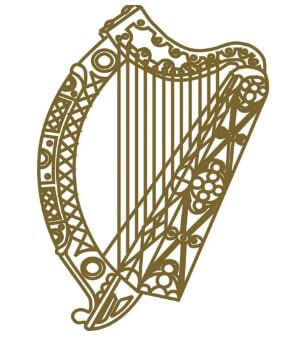
The emblem of Ireland, the Irish harp, is, in addition to Shamrock, one of Ireland's most famous symbols. It is depicted on Irish euro coins and is the logo of Guinness beer, which many consider a national drink. There are assumptions that the harp was brought to pre-Christian Europe by the Phoenicians from Egypt as their merchandise. Since the 10th century it has been an important symbol for the Irish people, personifying the spirit of the country. In fact, the British crown felt so threatened by the harp that in the 16th century the British ordered all the harps to be burned and all the harps to be executed.
Celtic symbol of strength - the knot of Dara
We're halfway through this incredible list. I think here is a good place to write something about the Celtic symbol of strength. I have received a large number of requests from publishing this article and have decided to include it in this post instead of publishing a brand new article.
The most important of the symbols of power is Dara node. The name Dara comes from the word 'doire', which is the Irish word for 'oak'. The trees were the connection with the world of spirits and ancestors, life and the gateway to other worlds. The most sacred tree of all was Oaktree (oak)
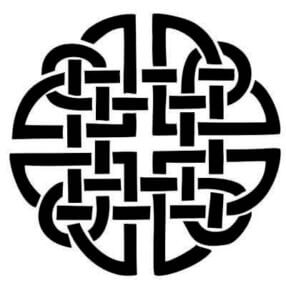
Dara basic knot - Celtic symbol of strength
Intertwined lines have no beginning or ending. The reason why a knot is called a Celtic symbol of power is due to the analogy that we all have our own roots, and this symbol comes from roots and has no end. Oak is a symbol of power and power, and therefore the Dara knot is the best Celtic symbol of power.
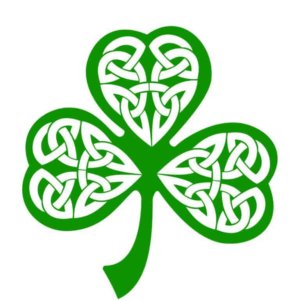
If we were to choose only one symbol, most associated with Ireland, then it must be the shamrock. Irish national flower.
Shamrock is a small clover that, with its three heart-shaped leaves representing the triad, was an important symbol of ancient Irish druids. The Celts believed that everything important in the world came in three. Just like the three phases of man's age, the three phases of the moon and the three regions of the world: earth, sky and sea.
In the 19th century, the shamrock became a symbol of Irish nationalism and rebellion against the British Crown, and anyone who was caught wearing it was executed.
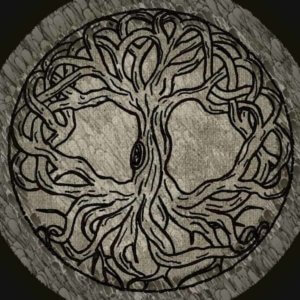
It is often represented by a tree with branches reaching up to the sky and roots spreading across the ground. The Celtic tree of life symbolizes the Druid faith in the connection between heaven and earth. The Celts believe that the trees were the ancestors of man and had connections with other worlds.
Here are some interesting facts about the Celtic Tree of Life:
The trees were the connection with the world of spirits and ancestors, life and the gateway to other worlds. The most sacred tree of all was the Oaktree he represented axis beat, the center of the world. The Celtic name for oak, Daur, comes from the word by (door) - the oak root was literally the entrance to the Other World, the realm of fairies. Countless Irish legends revolve around trees. If you fall asleep next to a tree, you can wake up in the realm of fairies. That is why the very symbol of life is associated with properties such as wisdom, strength and longevity. The Celts believed that if they cut down the sacred tree of their enemies, they would be deprived of power. The Celts derived the importance of rebirth from the seasonal changes that each tree undergoes (summer to winter, etc.).
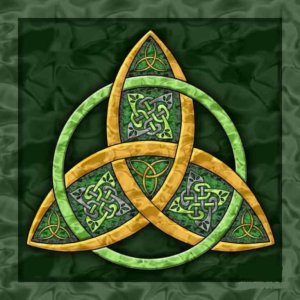
Like all Celtic knots, the triquetra is made up of one uninterrupted line that weaves around itself.
Meaning of Celtic knot:
It symbolizes eternal spiritual life without beginning and without end. According to Christians, this symbol was brought along with their Christian faith by the monks who tried to convert the then Celts. However, Triquetra is speculated as the oldest spiritual symbol. Her illustration, without any particular religious significance, appears in the ninth century in the book Kells, and this symbol was also found in 11th century Norwegian churches. The symbol corresponds to the Celtic belief that everything important in the world comes in three. You may recognize him in the contemporary film Thor's Hammer.

Another Irish symbol that represents the Celtic faith in the Trinity is the triskele or triskelion. Triskele is one of Ireland's oldest symbols and many can be found on the curbs in Newgrange. According to scientists, there were speculations that these engravings were created during the Neolithic or around 3200 BC
An illustration of this symbol is found around the world, as you can see below in the picture from Athens, Greece:
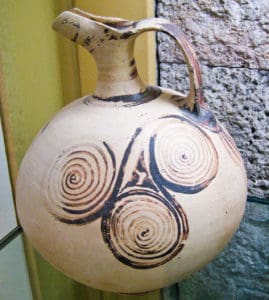
Burnt jug decorated with triple spirals. Late Heladian period, 1400-1350 BC
Spirals may have changed over the centuries, but the basic meanings include:
Three phases of life: life, death and rebirth
Three elements: Father, Son and Holy Spirit
Three areas: earth, sea and sky, past, present and future.
Claddagh's Ring is a traditional Irish ring that represents love, fidelity and friendship (hands represent friendship, heart represents love, and the crown represents fidelity). Claddagh rings are widely known in Ireland as a symbol of unification and devotion ..
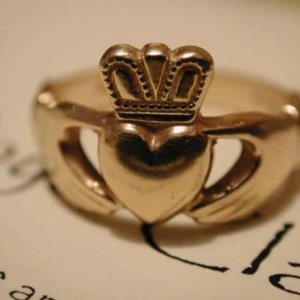
Claddagh comes from the Irish term "An Cladch", which means "flat rocky shore". It was the name of a village on the coast of Ireland, where the image of Claddagh originated. The suffix "GH" is added for phonetic purposes to create a throaty, hoarse sound that is unparalleled in our language.
It is said that the ring was created for his love by Richard Joyce, a fisherman from the village of Claddagh near Galway. She eventually became his wife. She waited for him years after Joyce was kidnapped by pirates, sold into slavery, and later regained his freedom.
You may not know that there are several ways to wear a Claddagh ring.
On the right hand, with the tip of the heart toward the fingertips: the wearer is free and may be looking for love.
On the right hand, with the tip of the heart towards the wrist: the wearer is in a relationship.
On the left hand, with the tip of the heart toward the fingertips: the wearer is engaged.
On the left hand, with the tip of the heart towards the wrist: the wearer is married.
The tradition of the Claddagh Ring began in Galway, a town in the west of Ireland facing the Atlantic Ocean. It was often used as a wedding ring, and the way a person wears it (a heart pointing towards or away from the body) indicates whether its "heart belongs to someone".